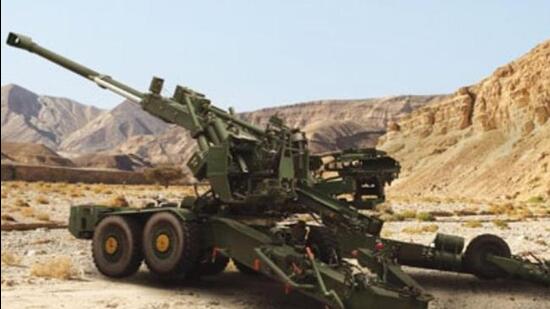Army to get locally made arty guns worth ₹7,000 cr
The ATAGS (advanced towed artillery gun system) deal, which includes 327 towing trucks, was cleared on Wednesday, paving the way for the signing of a contract by March-end
The Cabinet Commitee on Security (CCS), headed by Prime Minister Narendra Modi, has cleared a ₹7,000-crore deal for 307 locally made artillery guns along with towing vehicles, in a boost for self-reliance in the country’s defence manufacturing sector, officials aware of the matter said on Thursday.

The ATAGS (advanced towed artillery gun system) deal was cleared on Wednesday, paving the way for the signing of a contract by March-end, the officials said, asking not to be named.
The 155mm/52-calibre gun has a range of 48 km.
The Defence Research and Development Organisation (DRDO) began the ATAGS project in 2013 to replace older army guns with a modern 155mm artillery gun system. It partnered with two private firms --- Bharat Forge and Tata Advanced Systems Limited --- to manufacture the gun.
Also Read: India offers DRDO-developed Pinaka multi-barrel rocket launcher to France
The order will be split between the two private firms --- Bharat Forge, which emerged as the lowest bidder for the ATAGS tender, will manufacture and supply 60% of the guns, while the remaining 40% will be produced by TASL.
The development comes three months after the defence ministry signed a ₹7,629-crore contract with Larsen & Toubro for 100 more self-propelled K9 Vajra-T guns that will be manufactured locally with technology transfer from South Korean firm Hanwha Techwin.
The procurement of the new 155mm/52 calibre guns will catalyse artillery modernisation and enhance the operational readiness of the Indian Army.
That was a repeat order for the K9 Vajra-T guns under the under Buy (Indian) category. The army has so far inducted 100 such guns under a 2017 contract worth $720 million, and several of them have been deployed in the Ladakh sector after carrying out upgrades to enable operations in mountains. The guns were originally bought for a desert role.
The army plans to enhance its firepower, with a greater emphasis on mobility, precision attacks, range, quick strikes and survivability as it ramps up efforts to buy an array of weapons, including guns, rocket systems and missiles, as previously reported by HT.
The linchpin of this capability boost, which will cost tens of thousands of crores, is a five-pronged strategy evolved after an assessment of what the artillery regiments need for battlefield supremacy.
The strategy hinges on equipping all regiments with advanced 155mm artillery gun systems, inducting missiles and rockets with longer ranges and precision, lethal ammunition, reorganisation of surveillance and target acquisition units, and shortening the sensor-to-shooter loop for swift detection and destruction of targets.
In a first, an ATAGS prototype was deployed for the ceremonial 21-gun salute at the 75th Independence Day ceremony at Red Fort in 2022 along with British guns that have been traditionally used for the event.
India has taken a raft of measures to boost self-reliance in the defence manufacturing sector during recent years. These include imposing phased import bans on different types of weapons and systems, creating a separate budget for buying locally made military hardware, increasing foreign direct investment (FDI) from 49% to 74% and improving ease of doing business.
On February 1, India set aside more than ₹6.81 lakh crore for defence spending in the Union Budget, including ₹1.8 lakh crore for the modernisation of the military at a time when its shopping list encompasses fighter jets, helicopters, warships, submarines, tanks, artillery guns, drones, rockets and missiles.
In all, 75% of the modernisation outlay will be spent on buying weapons and equipment from domestic sources to boost self-reliance in the defence manufacturing sector.
India’s weapon imports fell 9.3% between 2015–19 and 2020–24, showed a report recently published by the Stockholm International Peace Research Institute.






